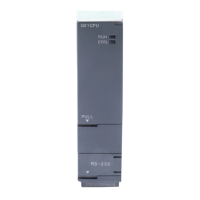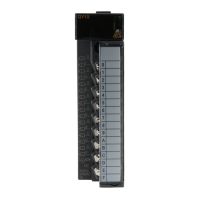6
FUNCTIONS
6.20 CPU Module System Display by GX Developer
6
- 128
1
Overview
2
Performance
Specification
3
Sequence Program
Configuration and
Execution Conditions
4
I/O Nunber Assignment
5
Memories and Files
Handled by CPU Module
6
Functions
7
Communication with
Intelligent Function
Module
8
Parameters
(1) Installed status
Enables the controlling CPU, the model an07 d the number of modules mounted onto
the selected base unit to be confirmed.
Note6.50
"Not installed" will be displayed for slots in which modules have not been mounted.
When slots have been set as "Empty" at the "I/O assignment" tab screen in the "(PLC)
Parameter" dialog box, the module's model will not be displayed when if a module has
been mounted.Note51
When the Redundant CPU is used, the power supply module mounting status and
Redundant CPU status are also displayed.
(2) Parameter status
Enables the I/O number, the module type and the number of modules mounted for
each of the slots on the selected base unit to be confirmed.
If the operation status shows 0 empty points and an allocation error is displayed, it
means that the PLC parameter's I/O allocation and the actual status are different.
Match the I/O assignment of the PLC parameter dialog box to the actual mounting
status.
When the Redundant CPU is used, the power supply module mounting status is also
displayed.
(3) Base
Enables the status of the modules mounted onto the base unit in use to be confirmed.
When there is at least one error module, the Module field turns to the status color of
that error module.
(4) Mode
Note6.51
Note52
Used when online module change is executed.
Refer to the following manuals for online module change.
QCPU User's Manual (Hardware Design, Maintenance and Inspection)
Manual of the module compatible with online module change
(5) Diagnostics
This function is used to confirm the status of the CPU module and errors.
Note51
Note52
Basic
Note6.50
When the Basic model QCPU is used, the control CPU of the module is not displayed.
Basic
Note6.50
Basic
High
Performance
Note6.51
Since online module change cannot be executed for the Basic model QCPU and High
Performance model QCPU, mode selection is not available.
Basic
High
Performance
Note6.51

